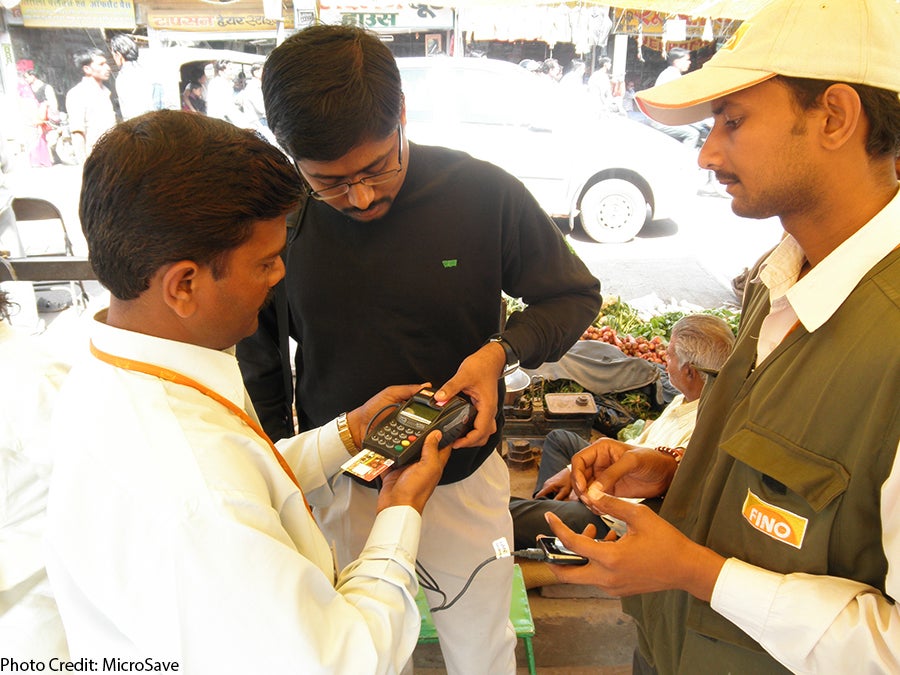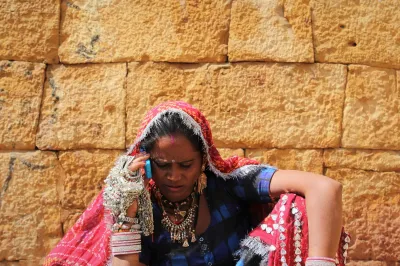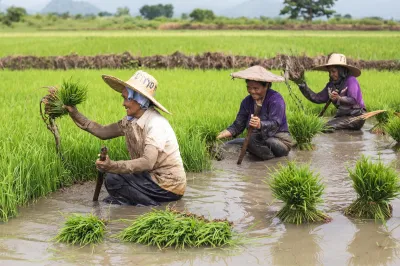MicroSave Releases New Assessment of Branchless Banking in India

India is undergoing a significant expansion in the use of agents (Business Correspondents) to offer a range of financial services. There are many questions about whether this present expansion can be sustained. A new publication from MicroSave highlights reasons for optimism. To understand this perspective, Greg Chen, CGAP’s Regional Representative for South Asia, asked Graham A. N. Wright, the founding Director of MicroSave, a series of questions about branchless banking in India (note: MicroSave uses the term electronic/mobile-banking or “e/m-banking” to describe this field, while we at CGAP tend to use “branchless banking”). MicroSave has a large presence in India with over 80 staff and a large practice focusing on: e/m-banking; microfinance; SME; private sector development and responsible finance.
Question: MicroSave’s latest discussion paper on branchless banking in India portrays a decidedly optimistic picture. How did you arrive at this and what are some of the positive conditions you see?
Graham Wright, MicroSave: India has huge opportunity to leverage the potential of e/m-banking and build a cash-light economy. In addition to its cutting edge information technology industry and relatively dense population, the Government of India is clearly determined to achieve financial inclusion through digital money and is taking aggressive steps to see this happen.
The gradual regulatory evolution to support business correspondent network managers (BCNMs) and banks in their outreach efforts continues – and the results are beginning to emerge. While the emphasis continues to be on numbers, the targets are such that large scale outreach infrastructure is being built in a short time frame, with an agent covering every village with a population greater than 2,000. This, coupled with the government’s resolve to move to cash-based subsidy transfer and social security payments systems, will ensure transactions. Institutions such as the Unique Identification Authority of India (UIDAI) could greatly ease customer KYC and authentication, and the National Payments Corporation of India (NCPI) has already built a national switch for inter-bank mobile transactions. This infrastructure could play expanded roles as systemic back-bones that support different players and bring about interoperability.
Question: The services necessary for financial inclusion are much broader and so what are the anchor or lead products for building agent-based branchless banking systems in India?
GW: Two key products have emerged to support the growth of agent or business correspondent networks. First, there is a growing range of government payments that are being processed through e/m-banking channels. Specifically there are two main programmes that account for Rs.462 billion ($9.2 billion) in money flows in 2011-2012 alone. The National Rural Employment Guarantee Scheme (NREGS) supports the poorest households by paying them for 100 days of assured work each year, and the National Social Assistance Programme offers old age pensions, widow pensions, disability pensions and others. While only a limited proportion of these payments are currently being processed on e/m-banking platforms, the government is keen to make all these payments using e-money. Future government programmes, including monetising those currently delivered in-kind (e.g. fertiliser and domestic fuel subsidies), may well be paid through e/m-banking infrastructure. These G2P programmes could provide the transaction volumes for sustainable agent networks, the massive rollout of bank accounts and potentially the beginning of a cash light ecosystem.
Second, banks and BCNMs are harnessing the huge potential of domestic remittances from migrant labour in cities across India. For example, the cities of Mumbai and Surat alone are believed to be the temporary home to about 10 million migrant labourers remitting $10-30 each month. These remittances have created another anchor product for agent-based e/m-banking initiatives. The SBI Tatkal product in particular has seen spectacular success.
Question: The anchor products you mention are predominantly payments whereas financial inclusion is defined by the Government of India as a broad suite of credit, savings and insurance services. Why are payments seen as anchor services and would payments later lead to other kinds of financial services?
GW: These anchor products offer a great opportunity for unbanked customers to experience banking, and therefore have the potential to accelerate new product adoption and thus financial inclusion. And it is quite clear from all MicroSave’s analysis that BCNMs and their agents will need to deliver a variety of products to achieve profitable and thus sustainable operations – so we can anticipate a growth in the range of products offered.
But while electronic remittances and transfer of benefits (EBT) are witnessing considerable consumer demand, the absence of a compelling value-proposition in basic no-frills savings accounts is keeping the customers, the agent network managers and the Indian banking system from realising the full potential of the agent-based banking model. NFAs are limited in functionality (no ATM cards, no cheque books etc. and in many cases not even fully integrated with banks’ core banking systems), but are often sold as full services savings accounts by over enthusiastic frontline workers. Once banks move to develop and deliver client-responsive savings products (including the much sought-after recurring or commitment deposits), we can expect to see significant uptake.
Question: Financial inclusion has been largely seen as a responsibility for banks alone – and something that they are only undertaking because they are being strongly encouraged to do so by the Government of India. What might this mean for banks and financial inclusion?
GW: Globally, we are in the process of reinventing how low income people send and receive money in remote locations; how they pay bills and loans; and how they save and insure against emergencies; thus for increasing numbers of people, how they enjoy greater freedom and control over their financial future. MicroSave’s research clearly indicates that they are willing to pay for these services – so there is evidence of a business case for banks to do this on a profitable basis, and not just in response to government mandates. Indeed several banks in India are already thinking along these lines.
But banks are more comfortable with their traditional business models of low volumes of high value transactions – and, of course, India’s burgeoning middle class offers plenty of opportunity for growth and profitability using this model.
The dilemma is how to make the new ways of banking—by mobile phone, via card readers and enhanced ATMs, and with third-party agents who act on behalf of branch staff—either profitable or at least sustainable for the low income market. Every other industry has had to revise how they make money in new markets with new technology. Banking may finally be forced to as well. There may be no traditional “business case” for financial inclusion. The scope and needs of these customers are too different. This reality may ultimately persuade some of the banks to share risks, and rewards, with MNOs, the post office, global consumer brands, and technology service providers. Each brings new value and possible solutions that banks alone cannot solve.
Financial inclusion is not a burden on banks. It is indeed a business opportunity to be tapped perhaps by the State Bank of India, which prides itself in its efforts to reach rural communities, or by smaller private banks looking for new markets and the favour of the RBI. However it requires non-traditional approaches and a paradigm shift in outlook.
Question: Critical to the success of branchless banking is to establish a high quality network of agents. What has MicroSave’s work shown about these options in India?
GW: Our work with a wide range of BCNMs, MFIs, banks and MNOs has given us a clear understanding of what people look for in agents; how commission and pricing structures affect both client take up and agent churn; how banks might set about deciding between institutional (BCNM-managed) and individual (bank-managed) agents; how best to manage agent and customer satisfaction within these systems; and the role that MFIs might usefully play within the financial services ecosystem of India.




Comments
I fully agree with the
I fully agree with the findings of the research on potential & scope available for branchless banking in india. However, the research of Micro save is silent on few issues which would function as enablers to the success of this process e.g telecommunication connectivity, road connectivity, cash management by BCs, willingness of the implementing agencies of the Govt schemes , cost of operation and many such factors which are biggest roadblocks in actual field operation, Having worked in this field since beginning of this initiative in north east india, the highest financially excluded region, i can only submit there is long way to go, to find a sustainable model of BC operation by the banks.More research on the ground is needed.
Tilak Das
I completely concur with the
I completely concur with the discoveries of the examination on potential and extension accessible for branchless saving money in india. Nonetheless, the exploration of Micro recovery is noiseless on few issues which would work as empowering agents to the accomplishment of this procedure e.g telecom network, street availability, money administration by BCs, eagerness of the executing organizations of the Govt plans , expense of operation and numerous such elements which are greatest detours in genuine field operation, Having worked in this field since start of this activity in north east india, the most elevated monetarily barred locale, i can just submit there is long approach to go, to locate a supportable model of BC operation by the banks.More research on the ground is required.
https://www.buildsupermart.com
Add new comment